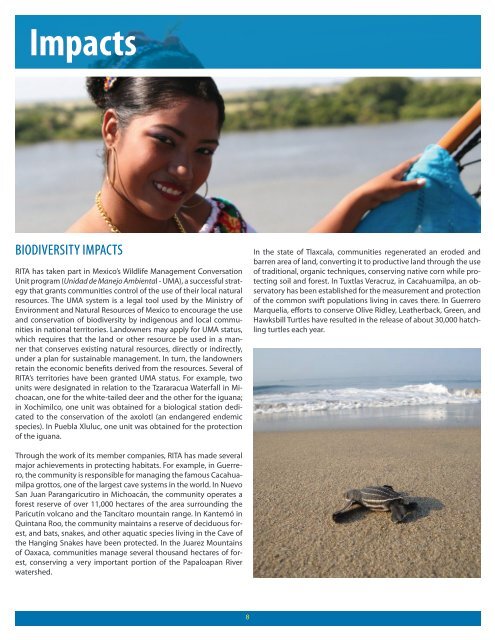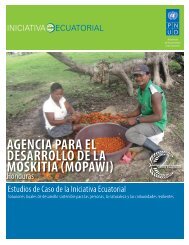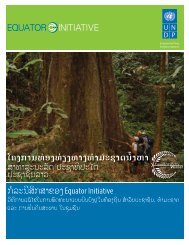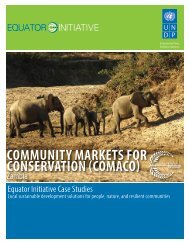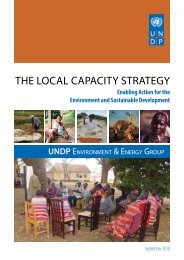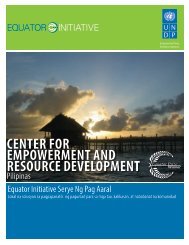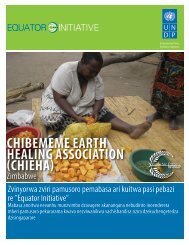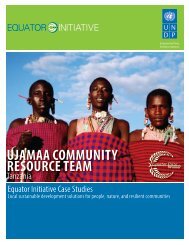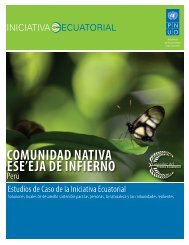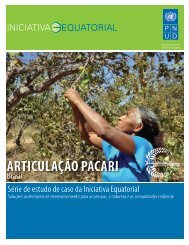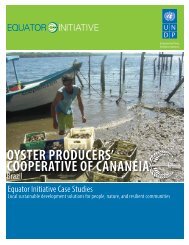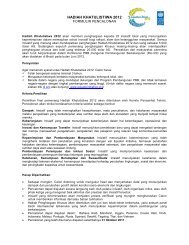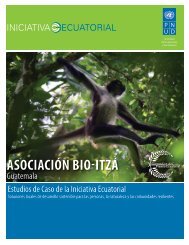INDIGENOUS TOURISM NETWORK OF MEXICO - Equator Initiative
INDIGENOUS TOURISM NETWORK OF MEXICO - Equator Initiative
INDIGENOUS TOURISM NETWORK OF MEXICO - Equator Initiative
You also want an ePaper? Increase the reach of your titles
YUMPU automatically turns print PDFs into web optimized ePapers that Google loves.
Impacts<br />
BIODIVERSITY IMPACTS<br />
RITA has taken part in Mexico’s Wildlife Management Conversation<br />
Unit program (Unidad de Manejo Ambiental - UMA), a successful strategy<br />
that grants communities control of the use of their local natural<br />
resources. The UMA system is a legal tool used by the Ministry of<br />
Environment and Natural Resources of Mexico to encourage the use<br />
and conservation of biodiversity by indigenous and local communities<br />
in national territories. Landowners may apply for UMA status,<br />
which requires that the land or other resource be used in a manner<br />
that conserves existing natural resources, directly or indirectly,<br />
under a plan for sustainable management. In turn, the landowners<br />
retain the economic benefits derived from the resources. Several of<br />
RITA’s territories have been granted UMA status. For example, two<br />
units were designated in relation to the Tzararacua Waterfall in Michoacan,<br />
one for the white-tailed deer and the other for the iguana;<br />
in Xochimilco, one unit was obtained for a biological station dedicated<br />
to the conservation of the axolotl (an endangered endemic<br />
species). In Puebla Xluluc, one unit was obtained for the protection<br />
of the iguana.<br />
In the state of Tlaxcala, communities regenerated an eroded and<br />
barren area of land, converting it to productive land through the use<br />
of traditional, organic techniques, conserving native corn while protecting<br />
soil and forest. In Tuxtlas Veracruz, in Cacahuamilpa, an observatory<br />
has been established for the measurement and protection<br />
of the common swift populations living in caves there. In Guerrero<br />
Marquelia, efforts to conserve Olive Ridley, Leatherback, Green, and<br />
Hawksbill Turtles have resulted in the release of about 30,000 hatchling<br />
turtles each year.<br />
Through the work of its member companies, RITA has made several<br />
major achievements in protecting habitats. For example, in Guerrero,<br />
the community is responsible for managing the famous Cacahuamilpa<br />
grottos, one of the largest cave systems in the world. In Nuevo<br />
San Juan Parangaricutiro in Michoacán, the community operates a<br />
forest reserve of over 11,000 hectares of the area surrounding the<br />
Paricutín volcano and the Tancítaro mountain range. In Kantemó in<br />
Quintana Roo, the community maintains a reserve of deciduous forest,<br />
and bats, snakes, and other aquatic species living in the Cave of<br />
the Hanging Snakes have been protected. In the Juarez Mountains<br />
of Oaxaca, communities manage several thousand hectares of forest,<br />
conserving a very important portion of the Papaloapan River<br />
watershed.<br />
8


